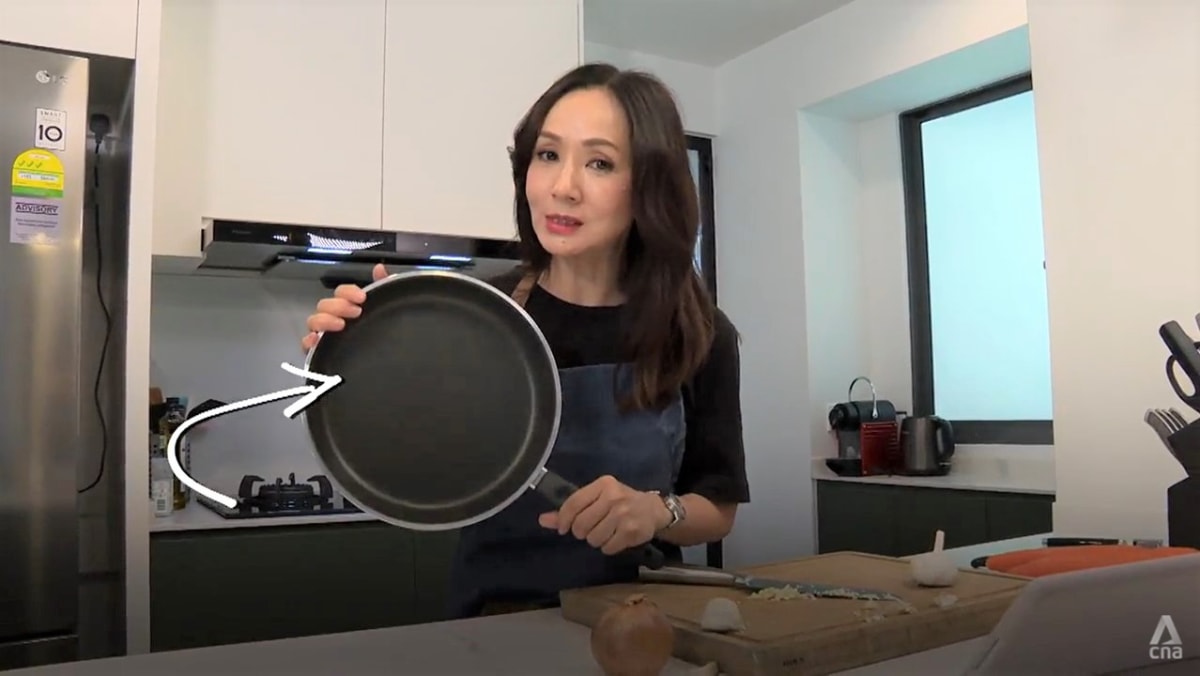SINGAPORE: For as long as non-stick frying pans have been a mainstay in many home kitchens, there has been a debate about how safe these pans are.
Man-made chemicals are needed to make the pans’ non-stick coating: Widely known as “forever chemicals”, they are not easily broken down in the human body and take a long time to break down, if at all, in the environment too.
And now a study of more than 1,000 Singaporean women — which followed them as they attempted to get pregnant and through their pregnancy — has found that these chemicals can reduce fertility.
Women with a higher level of the chemicals in their bloodstream were 40 per cent less likely to fall pregnant within a year and 34 per cent less likely to have a live birth within the year.
Related stories:
The burden of infertility rests mainly on women – here's what couples can do to bridge the gap
The reality behind infertility: No single reason why a woman can’t get pregnant, multiple factors make it complex
The researchers considered a higher level of chemicals to be two to three nanograms per millilitre of blood. A nanogram is a billionth of a gram, not visible to the naked eye.
“That’s not a very high level,” said clinician scientist Jerry Chan at KK Women’s and Children’s Hospital, one of the researchers.
“It’s just about a tenth of that compared to, let’s say, the United States, Norway or even China, and yet we’re able to determine a negative impact on fertility.”
His advice to women who are trying to get pregnant or are pregnant is to “try to avoid potentially dangerous chemicals”.
It also matters if a Teflon pan has scratches. “Once you have a big, deep scratch, what happens is you create all these grooves,” he said.
“Then you have more contact with these ‘forever chemicals’ — so more contact points mean more of the (chemical) release can happen.”
Researchers have found them even in remote areas: in rainwater on the Tibetan Plateau and, as reported last year, in the snows of Antarctica.
Increasingly, these chemicals are linked to a host of health problems such as liver damage and thyroid disease.
“In some countries, the ‘forever chemicals’ can be found in drinking water,” said pharmaceutical scientist Eric Chan from NUS’ department of pharmacy. “I’d regard this as the highest risk.”
In Singapore, which has included PFAS in the PUB’s routine testing and monitoring regime since 2016, “these compounds have not been detected in our drinking water”, the Ministry of Sustainability and the Environment said last year in a parliamentary reply.
Still, there are other sources of exposure: Chemicals may leak from grease-proof food packaging, some sunscreens contain PFAS — which can enter through the skin and circulate via the bloodstream — while the risk of leakage from wearables like raincoats is lower.
ALTERNATIVES TO TEFLON PANS
To reduce exposure, it is easiest for consumers to focus on two categories: Grease-proof food packaging and non-stick cookware.
When it comes to frying pans, one option is stainless steel. It is durable, resistant to damage and relatively easy to maintain. But can food fried on these pans slide off nicely?
Anthony Yeoh, chef-owner of French bistro Summer Hill, has some tips on cooking better with stainless steel.
First, preheat the pan on medium heat. “This is something that a lot of cooks make a mistake, at home, of (not) doing. And then … everything kind of gets mashed up and stuck to the pan,” he said.
“When the stainless steel is properly heated up, the metal expands, and it closes up all the little gaps — because the metal is actually porous.”
The way to test the pan’s temperature is to add drops of water. Normally, when the pan is not hot enough, the water will “stay in one spot and bubble like a little puddle”, instead of skating across the pan.
The “workhorse of the professional kitchen” is the carbon steel pan, which is a bit heavier and great for cooking steaks, for example.
“But unlike a stainless steel pan, you can’t really cook anything too acidic in this,” said Yeoh. “If you’re cooking a tomato sauce, this will give it … a metallic taste.”
Cast iron pans, meanwhile, are the ones “everybody kind of loves because they look pretty” and are “very traditional”. But “these are the ones that probably, out of all four, require the most maintenance”, he said.
These pans must be seasoned — rubbed with salt, oiled and put in a preheated oven — to develop a non-stick coating. “Then make sure you don’t damage the non-stick coating,” he added.
Then there is ceramic-coated non-stick cookware, which is made of silica, or essentially sand, and other inorganic materials.
They are perceived to be a safer non-stick cookware choice but do not last long — a year on average or “maybe three years or so” for the good ones, Yeoh reckoned — compared to common non-stick pans.
Watch this episode of Talking Point here. The programme airs on Channel 5 every Thursday at 9.30pm.
Read this story in Bahasa Indonesia here.




